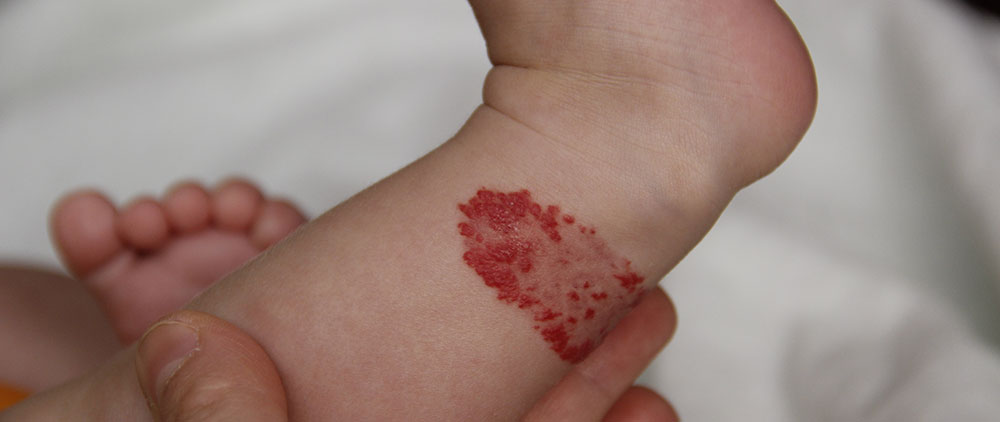Hemangiomas
What is a hemangioma? What is an infantile hemangioma?
Hemangiomas are the most common growth of childhood, seen in up to 10% of infants. These are benign (noncancerous) vascular growths made up of the cells that typically line the blood vessels. Hemangiomas of infancy may be visible at birth or may not be recognized until the first few weeks or even months of life. In general, however, most hemangiomas become evident by 2 to 3 weeks of age.

Why does my child have hemangioma?
The cause of hemangiomas is not yet understood, but it is known that they are not related to drugs or medications that may have been taken during pregnancy, nor any known environmental exposures that may have occurred during that time. In some families, multiple family members over several generations have been affected, thus suggesting a genetic component. Current research is focusing on the hemangioma precursor cell, which will help with our understanding of the origin of hemangiomas.
Is my baby's hemangioma getting bigger?
Hemangiomas of infancy almost always have a period of growth, or a proliferative phase. This is followed by a period of shrinkage, or involution. Most hemangiomas begin their proliferative (growth) phase shortly after birth. This phase usually lasts for four to six months, but can be longer or shorter. Each lesion has its own growth timetable. The involutive phase is much slower and can take as long as 10 years.
What are the reasons to treat hemangiomas?
Hemagiomas are typically not problematic. They are painless, and as mentioned above, will resolve or involute in time. However, there are specific circumstances that suggest treatment might be needed:
- Ulceration (skin breakdown) and bleeding
- Interference with vital functions such as vision, hearing, breathing and feeding
- Distortion of facial features or a very large lesion
Further investigation by your pediatrician/dermatologist team is also important with certain patterns and locations of hemagiomas. Facial hemangiomas that present in a distribution resembling a beard can be associated with airway involvement. Hemangiomas located over the lower back and spine can be associated with spinal defects. Hemangiomas involving the genital area can be associated with pelvic and urinary system abnormalities. Multiple skin hemangiomas often are associated with hemangiomas of internal organs.
How can I treat a hemangioma?
Most hemangiomas involute spontaneously and do not require any treatment.
Decisions as to whether to treat and when to treat must be made on an individual basis. Treatment is dependent upon both the stage of growth (proliferation vs. involution) of the lesion, the presence of complications, and emotional needs and considerations. Observation, drug therapy (both oral and topical agents), laser therapy and surgical removal are the four most common management options. In some patients, a combination of any of these treatments may be used over time.
At Dermatology Physicians of Connecticut, Dr. Julie Cantatore-Francis, board certified and fellowship trained in both dermatology and pediatric dermatology, is experienced in diagnosis, evaluation and management of infantile hemangiomas.


